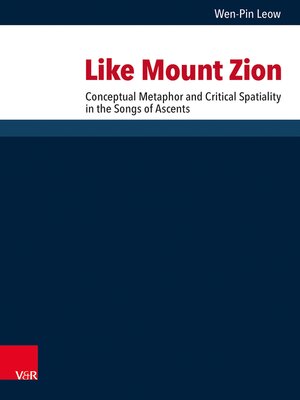Like Mount Zion
ebook ∣ Conceptual Metaphor and Critical Spatiality in the Songs of Ascents · Forschungen zur Religion und Literatur des Alten und Neuen Testaments
By Wen-Pin Leow

Sign up to save your library
With an OverDrive account, you can save your favorite libraries for at-a-glance information about availability. Find out more about OverDrive accounts.
Find this title in Libby, the library reading app by OverDrive.



Search for a digital library with this title
Title found at these libraries:
| Loading... |
Critical spatial approaches — particularly those informed by the scholarship of Lefebvre, Foucault, and Soja — have significantly impacted biblical scholarship over the last twenty years. However, these spatial approaches have been limited due to the methodological challenges inherent in transposing the social-scientific approaches of the aforementioned scholars to the task of biblical interpretation. This volume adapts conceptual metaphor theory as a methodological bridge to address such constraints. The first half of the volume begins by surveying the field of critical spatiality in biblical studies, arguing for the need for fresh methodological development. Thereafter, the volume delineates a particular critical spatial approach, inspired by Lefebvre and Foucault, for which conceptual metaphor theory is proposed as a methodological bridge. The second half of the volume begins by proposing the Psalms of Ascents as a case study upon which the method could be applied. It is then argued that the proposed method – if efficacious – should provide insight on corpus' "Zion theology" and its so-called pilgrimage character. Using the proposed method in conjunction with conventional historical-grammatical tools of poetic analysis, each psalm is analysed with regard to its metaphor and spatiality. The volume concludes that the case study demonstrates the efficacy of the proposed methods by allowing a rich reading of each psalm, especially by explicating the spatial narratives and/or spatial metaphorical conceptualisations that underlie each text, and providing fresh insight on the collection as a whole.






